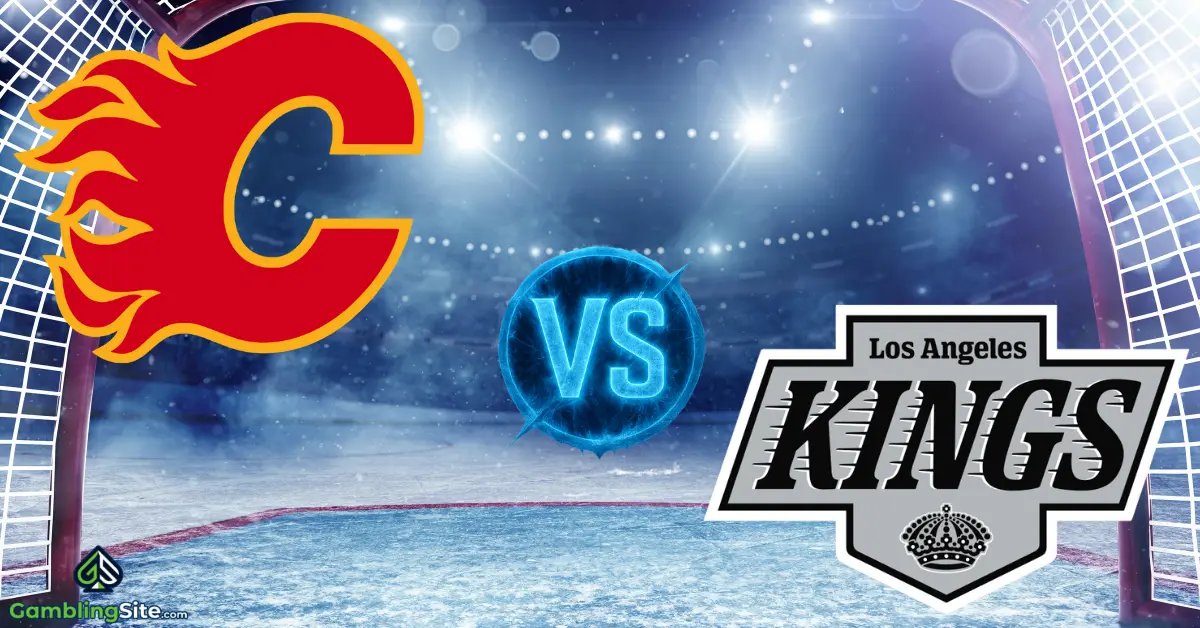The Gamification of Gambling: How Video Game Elements are Being Incorporated into Casino Games

If you have ever thought about what it would be like to play your fav video game with actual money on the line, then you’ll want to pick up what we are puttin’ down.
Gamification is popular for a reason, and it’s because people love a lil’ competition—it makes things more interesting! And now, video game elements are being incorporated into casino games, which are already competitive, so it’s double the fun. By introducing video game elements into traditional gambling games, developers are making them more interactive and fun. The trend is bringing in gamers and gamblers, mixing in some extra entertainment with gambling.
Why is this a growing trend? We were curious, too, so we’ll explain and unpack gamification in gambling—looking at how and why these game-like features are being added to casino games. We’ll go over what exactly this means for gamers looking for a new challenge and gamblers who want a fresh take on their old favorites!
Understanding Gamification
Basically, the essence of gamification is a technique that applies game-design elements to various industries, making boring tasks more fun. You can turn everyday activities into challenges where you earn rewards, level up, and compete with others. From education and fitness to corporate training and now gambling, gamification is changing how we interact with the world around us.
Definition of Gamification
Gamification involves incorporating game-design elements into non-game contexts to boost user participation and motivation. These elements include points, badges, levels, and leaderboards, which make activities more interactive and enjoyable.
Gamification isn’t just for digital platforms; it can be seen in simple systems like loyalty programs, where customers earn points and rewards for frequent purchases. This approach leverages the natural human love for games to increase engagement and make even the most routine tasks a bit less mundane.
Historical Context
- Early Beginnings: The origins of gamification can be traced back to early 20th-century initiatives such as the Boy Scouts, which awarded badges for achievements. This system used game-like elements to motivate and recognize accomplishments. Businesses also started incorporating gamification techniques in marketing strategies, like frequent flyer miles and customer loyalty programs, which used point systems and rewards to encourage repeat business.
- Digital Revolution: The late 1990s and early 2000s saw significant advancements in gamification with the rise of digital technology. Educational games like Math Blaster introduced game mechanics into classrooms, making learning more engaging. The concept of gamification was formally coined by Nick Pelling in 2002, who envisioned adding game-like elements to commercial devices to make them more appealing.
- Modern Gamification Platforms: The mid-2000s marked the emergence of the first dedicated gamification platforms, like Bunchball, in 2005. These platforms provided tools for businesses to incorporate game mechanics into their websites and customer interactions. Social apps like Foursquare, which used badges and leaderboards to reward user activity, showcased the success of gamification in driving user engagement.
- Mainstream Adoption: By the 2010s, gamification had become a widely recognized concept. Platforms like Fitbit and educational tools like Kahoot! demonstrated the broad applicability of gamification. These platforms used game mechanics to promote healthier lifestyles and boost learning experiences. This period also saw increased academic and corporate interest, leading to extensive research, conferences, and widespread adoption across different sectors.
Key Elements of Gamification
- Rewards: Rewards are fundamental to gamification, providing incentives for completing tasks or achieving goals. These rewards can range from virtual points and badges to tangible benefits like discounts and special privileges. For example, fitness apps often use points and badges to motivate users to meet their exercise targets, making pursuing health goals more fun and rewarding.

- Levels: Levels indicate progression within a gamified system. As users accumulate points or complete tasks, they advance to higher levels, unlocking new challenges and rewards. This structure motivates users by giving them continuous goals and a sense of achievement. Language-learning apps like Duolingo use levels to encourage users to maintain their learning streaks and compete against other users, making the process of acquiring new languages more interesting.
- Challenges: Challenges introduce specific tasks that users must complete, often within a set timeframe. These can be daily activities, missions, or longer-term goals. Challenges add an element of urgency and fun, driving users to participate regularly so they can complete said challenges. Peloton’s fitness platform uses daily and weekly challenges to keep users active and motivated, turning exercise into more than a stationary bike ride.
- Leaderboards: Leaderboards rank users based on their performance, introducing a competitive element to the gamified experience. They allow users to compare their achievements with others, fostering a sense of competition and community. However, the impact of leaderboards can vary; they can motivate those near the top but potentially discourage those at the bottom. The effectiveness of leaderboards often depends on the context and the user base.
Application in Gambling
In the gambling sector, gamification is changing traditional casino games by making them better in terms of interaction and appeal. Incorporating elements like rewards, levels, challenges, and leaderboards, casinos create environments that bring in both gamers and gamblers. Modern slot machines offer points and bonuses for specific combos, mirroring the rewarding mechanisms found in video games. This approach increases player participation and introduces innovative ways to reward loyalty and personalize the gambling experience.
Gamification in gambling extends beyond player participation; it also introduces new methods for casinos to build lasting relationships with their customers. By crafting personalized experiences that reward continued play, casinos can cultivate greater loyalty and improve player retention.
The Evolution of Casino Games
Think about how your favorite casino games have changed over the years—from simple card games to interactive experiences; the world of casino gaming has undergone a dramatic transformation. The integration of gamification elements has fueled this change!
Traditional Casino Games
Let’s take a quick look at some of the classic casino games that have stood the test of time:

Blackjack: This card game is all about getting your hand’s value as close to 21 as possible without going over. Players compete against the dealer, strategically deciding to hit, stand, split, or double down.

Poker: A game of skill and strategy where players bet based on the strength of their hands. The objective is to win chips by either having the best hand or convincing others to fold.

Roulette: Players bet on where a ball will land on a spinning wheel. Bets can be placed on individual numbers, groups of numbers, colors (red or black), or whether the number will be odd or even.

Slot Machines: These are purely luck-based games where players spin reels in hopes of matching symbols on paylines. Slots come in various themes and formats, from classic three-reel games to elaborate video slots with multiple paylines and bonus features.

Craps: A dice game where players bet on the outcome of the roll, or a series of rolls, of two dice. It’s known for its fast pace and various betting options.

Baccarat: A card game where players bet on whether the player’s or banker’s hand will be closer to nine or if the game will end in a tie.

Keno: A lottery-like game where players choose numbers from a set range, and wins are determined by how many of those numbers are randomly drawn.

Pai Gow Poker: A poker variation that combines Chinese domino game Pai Gow elements with traditional poker. Players create two hands from seven cards and compete against the dealer.
These games are all based on chance, although some, like poker and blackjack, involve a level of skill and strategy.
Introduction of Gamification
The concept of gamification started to infiltrate the casino industry in the mid-2000s. Inspired by the success of social apps and video games, online casinos started incorporating things like points, rewards, levels, and challenges to make the games more interactive and fun.
Impact on Game Design:
- Reward Systems and Loyalty Programs: Modern casinos use sophisticated reward systems to keep players coming back. By offering points for various activities, like daily logins or completing specific challenges, players are encouraged to participate on a regular basis. Points can be redeemed for bonuses, free spins, or other perks, adding extra benefits.
- Challenges and Missions: Games now often include dynamic challenges and missions—tasks that involve exploring different games, hitting certain milestones, or accumulating points over time. This approach adds variety and keeps things from getting stale.
- Personalized Gaming Experiences: Personalization is really important in modern casino games! By using data analytics, casinos can tailor challenges, rewards, and promotions to individual player preferences. This makes games feel like they are catered specifically to each player, which can boost loyalty to a gambling site.
- Social Interaction and Community Building: Leaderboards and in-game chat features add a social dimension to online gambling. Players can see how they rank against others and interact with other players, creating a sense of community and competition. Live dealer games, where players can interact with the dealer in real time, further improve the social aspect of online casinos.
- Contemporary Game Formats: The fusion of gaming and gambling has led to new, original game formats. Skill-based games, tournaments, and interactive storylines are gaining popularity, offering players a new and fun way to play their favorite games.
Key Video Game Elements in Casino Games
What are the popular video game elements that are being added to casino games? Look below to find out!
Achievements and Rewards
Achievements and rewards are a great way to keep players coming back to platforms—it’s in our nature to complete goals and grab incentives!
How Casinos Use Achievements and Rewards to Keep Players Interested
- Progressive Rewards: Online casinos use a tiered reward system where players earn points for each game they play. As players accumulate points, they can unlock higher tiers with better rewards such as bonus credits, free spins, or exclusive game access. This system encourages regular play and gives players something to reach for.
- Daily and Weekly Challenges: Casinos present players with daily or weekly challenges to complete for extra rewards. These could include playing a certain number of games, hitting specific milestones, or taking part in special events.

- Leaderboard Competitions: Leaderboards add a competitive element by ranking players based on their performance. Players are motivated to climb the ranks to earn top positions, which often come with substantial rewards like cash prizes, luxury items, or even exclusive event invitations.
- Achievement Badges: Similar to video games, casinos award badges for completing specific tasks or reaching certain milestones. These badges can be displayed on a player’s profile, showcasing their accomplishments to others and adding a social element to the gaming experience.
Specific Casino Games that Feature Achievement Systems
- Slot Machines with Storylines: Some modern slot games, like the “Book of Ra” series by Novomatic, incorporate storylines and achievement systems. Players can unlock achievements by completing different in-game objectives, such as collecting specific symbols or reaching bonus rounds.
- Loyalty Programs: Most gambling sites, like Bet365 and Caesars Palace just to name two, have comprehensive loyalty programs where players earn points for every game they play. These points can be redeemed for cash bonuses, free play, and other perks. The programs also feature tier systems, where higher levels offer more substantial rewards, so players keep playing and advancing up the reward ladder.
- Social Casino Games: Games like Zynga Poker and Slotomania integrate social features with achievement systems. Players can earn badges for their accomplishments, take part in daily challenges, and climb leaderboards, all while interacting with friends and other players online.
Levels and Progression
Levels and progression systems are important components in modern casino games—they give players a sense of advancement and achievement, motivating them to keep playing. Below are the most common ways that levels and progression are integrated into casino games:
- Tiered Loyalty Programs: Most online casinos use loyalty programs where players accumulate points through gameplay. As players earn points, they move up through different tiers, such as Bronze, Silver, Gold, and Platinum. Each tier offers better rewards, like increased bonuses, exclusive promotions, and faster withdrawal times. This system encourages players to play regularly to achieve higher statuses so they can unlock better rewards.
- Experience Points and Leveling Up: Similar to role-playing games, some casino games award experience points (XP) for various actions, like placing bets, completing challenges, or participating in special events. As players accumulate XP, they level up, unlocking new game features, bonuses, or access to exclusive games.
- Unlockable Features and Content: Certain casino games incorporate unlockable features that become available as players pass levels. These features can include new game modes, special bonuses, or additional game themes—a player can unlock a new mini-game or bonus round after reaching a specific level.
Games that Have Successfully Added These Features
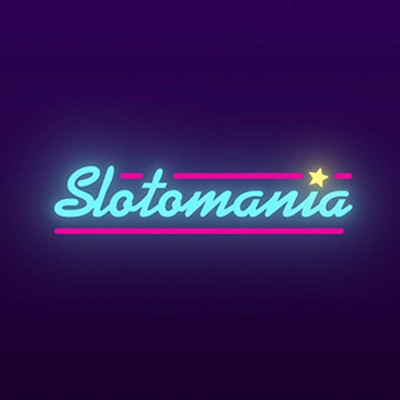
Slotomania: Playtika integrates a sophisticated progression system into this popular social casino game. Players earn XP through gameplay and level-up, unlocking new slot machines, mini-games, and special features. The game also includes a tiered loyalty program where players can earn better rewards as they progress through levels
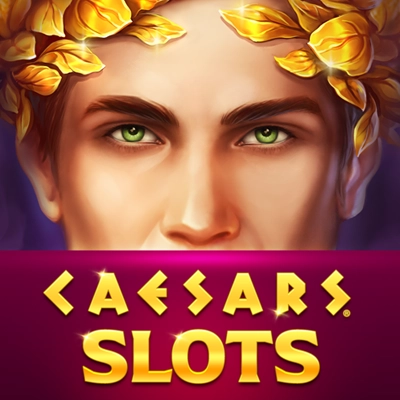
Caesars Slots: Another example from Playtika, Caesars Slots features a comprehensive leveling system where players earn XP and level up to unlock new games and bonuses. The game also integrates social elements, such as leaderboards and in-game chat, which enhance the sense of community and competition among players. This combination of progression and social interaction keeps players engaged and encourages long-term play

Bet365 Casino: Bet365 Casino integrates a comprehensive progression system that rewards players with points for their activities. These points contribute to a loyalty ladder, where each step up offers better rewards, including special promotions and access to exclusive games. The system also includes daily challenges and missions that provide additional XP, making the gaming experience dynamic and rewarding.
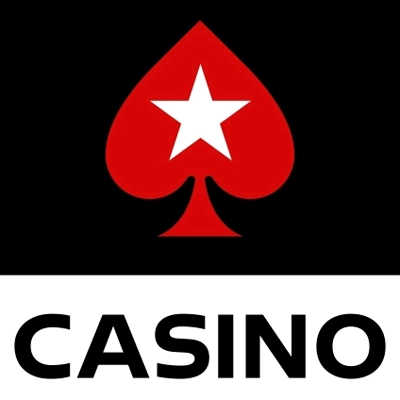
PokerStars Casino: PokerStars Casino features a detailed leveling system where players earn XP by participating in games and completing various tasks. As they level up, they unlock new features, receive special bonuses, and gain access to exclusive tournaments. The platform also includes a social leaderboard, which adds a competitive element and encourages players to improve their standing among peers.
Challenges and Missions
Daily challenges and missions are now common in online casino apps—they add variety and a competitive edge. Below are some examples of how these elements are incorporated into popular casino platforms:
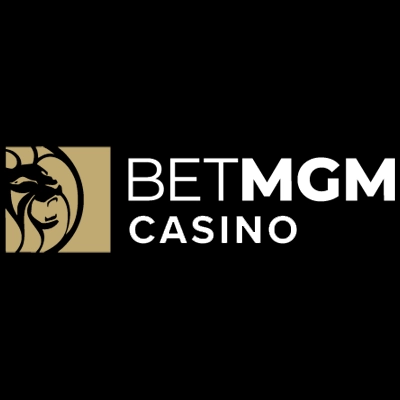
BetMGM Casino: BetMGM integrates daily challenges and missions into its wide range of games. Players can complete tasks such as playing a specific number of hands in card games or hitting certain jackpots on slot machines. These challenges give immediate rewards like bonus credits and free spins but also contribute to the player’s progression in the loyalty program.
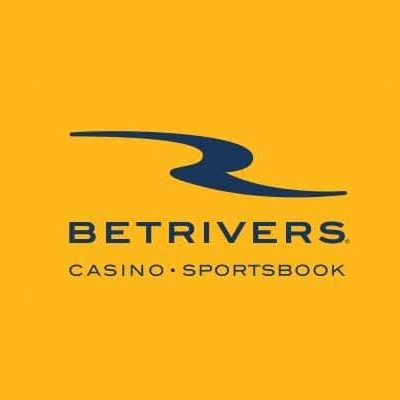
BetRivers Casino: BetRivers incorporates daily login bonuses and various missions that players can complete to earn additional rewards. These challenges may involve playing specific slot games, reaching certain betting milestones, or participating in daily tournaments.
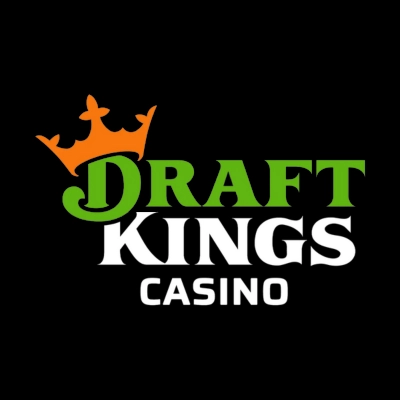
DraftKings Casino: DraftKings offers a variety of daily and weekly challenges across its casino games. Players might be tasked with achieving certain outcomes in slots or table games, participating in specific tournaments, or reaching betting milestones. Completing these challenges rewards players with points, bonus funds, and other perks.

FanDuel Casino: FanDuel Casino also uses daily and weekly missions to enhance player engagement. Players can take on challenges like achieving specific outcomes in slot machines or playing a set number of rounds in table games. These missions come with lucrative rewards such as bonus funds, free spins, or entries into special events. The system motivates players to log in daily and complete the missions, maintaining a high level of activity on the platform.
Popular Casino Games with These Elements

BetRivers Casino: BetRivers has a variety of daily challenges and missions integrated into its platform. For example, players might be tasked with playing a specific number of spins on selected slot games or reaching a certain win threshold. These challenges not only provide immediate rewards but also contribute to the player’s progression in the casino’s loyalty program. The missions keep the gameplay fun and guarantee that players have new goals to reach for regularly.

FanDuel Casino: FanDuel Casino uses daily and weekly missions to improve player engagement. Players can participate in challenges like hitting specific combinations on slot machines or playing a set number of blackjack hands. These missions usually come with solid rewards like bonus funds, free spins, or entries into special events. This system encourages players to log in daily and complete the missions, thereby maintaining a high level of activity on the platform.

Caesars Slots: Caesars Slots is another platform that effectively incorporates daily challenges and missions. Players can earn rewards by completing tasks such as spinning a set number of slots or hitting specific in-game milestones. The game also features social elements like leaderboards, where players can compare their progress with friends, fostering a sense of community and competition.

PokerStars Casino: The daily missions on PokerStars are a great example of integrating challenges into a traditional casino game. Players can opt into various missions, such as completing a set number of hands in cash games or achieving specific outcomes in tournaments.
Social Interactions
The social features added to online casino games are designed for players to interact and create a sense of community. While not all real money casino apps have them (yet), below are how these features are integrated into gaming platforms:
- Friend Lists and Chat Functions: Social casino games allow players to add friends, send messages, and even chat in real time. This feature boosts the social experience by enabling players to communicate, share tips, and engage in some friendly competition.
- Multiplayer Modes: Games include multiplayer modes where players can compete against each other in real-time. Poker and blackjack are common examples, where players sit at virtual tables and compete, adding a social and competitive element to the gameplay.
- Community Events: Regularly scheduled community events and tournaments encourage players to participate together. These events can include special challenges, leaderboards, and unique rewards, creating a feeling of camaraderie and competition among players.
Casino Games That Excel in Creating a Social Gambling Experience

Zynga Poker: Zynga Poker is among the most popular social casino games, offering an excellent social experience. Players can add friends, join tables with them, and chat during gameplay. The game also features a leaderboard system and regular tournaments that bring the community together for competitive play.

Slotomania: Known for its amazing graphics and interactive gameplay, Slotomania integrates several social features. Players can send and receive gifts, share achievements, and compete in a host of challenges. The game also has a strong community aspect, with frequent events and tournaments encouraging social interaction.
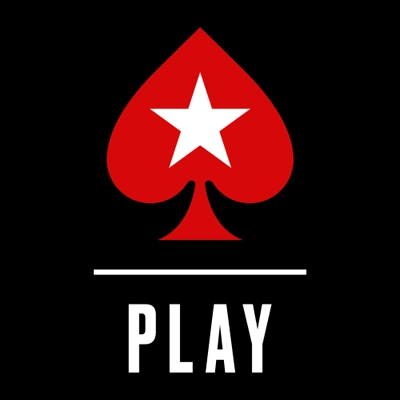
PokerStars Play: This platform excels in creating a social environment for its users. Players can compete in real-time poker matches, join clubs, and play in special events. The game also features leaderboards and community challenges, which help to build a strong sense of community among players.
Graphics and Storytelling
The graphics and storytelling in casino games have come a long way with the incorporation of high-quality graphics and immersive storytelling. These elements don’t just make the games visually appealing—it also brings in players who want true gaming visuals when they wager!
Better Graphics and Immersive Storytelling in Modern Casino Games
- High-Quality Graphics: Advances in graphics technology have elevated casino games from simple, pixelated designs to stunning, photorealistic visuals. These improvements mean a much more realistic gaming environment, making players feel like they are actually part of the game world. Games now utilize 2D and 3D graphics, detailed animations, and realistic sound effects to improve the overall experience. Popular slot games like Gonzo’s Quest and Starburst by NetEnt use high-def graphics to whisk away players into their thematic worlds.
- Immersive Storytelling: Modern casino games incorporate complex narratives that engage players—stories that have intricate plots, character development, and interactive elements that let players influence the outcome. This approach borrows heavily from video game design, where player choices and actions can alter the storyline. Adventure-themed slots feature characters on quests, complete with cutscenes and bonus rounds that advance the narrative.
- Thematic and Visual Storytelling: Some casino games are built around strong themes that permeate every aspect of the game, from the symbols on the reels to the bonus features. An Egyptian-themed slot will have symbols of pharaohs, pyramids, and hieroglyphics, with bonus rounds that take players on treasure hunts in ancient tombs.
Casino Games that Use Advanced Graphics and Narratives

Gonzo’s Quest: This slot game by NetEnt is beloved for its immersive 3D graphics and engaging storyline. Players follow the adventures of Gonzo, a Spanish conquistador, as he searches for the lost city of gold, El Dorado. The game features cascading reels, where symbols fall into place rather than spin, and animations that bring the quest to life, making the experience more interactive and visually appealing (available at 888 Casino and Bet365).

Game of Thrones: Developed by Microgaming, this slot game is based on the hit HBO TV series. It features high-quality graphics that faithfully recreate the world of Westeros. Players can choose to align with one of the four houses (team Stark all the way), each offering bonuses and features. The game has detailed animations and sound effects that boost the storytelling, making players feel like they are part of the epic saga (available at BetMGM and DraftKings).

Jurassic Park: Another Microgaming title, this slot game uses cutting-edge graphics to recreate the iconic scenes and characters from the Jurassic Park movies. The game features animations of dinosaurs roaming the reels, immersive sound effects, and bonus rounds that take players on an adventure through the park (available at FanDuel Casino and BetRivers).

Thunderstruck II: This game by Microgaming is a sequel to the popular Thunderstruck slot. It features improved graphics and a narrative based on Norse mythology. Players encounter gods like Thor, Odin, and Loki, with each god offering unique bonuses and features. The game’s graphics and storytelling elements work together to create an epic, immersive experience (available at PokerStars and 888 Casino).
Benefits of Gamification in Gambling
When it comes to the benefits of gamification in gambling, there are several! Not only does it keep players interested longer and make games more fun, but it helps the casinos as well by building up loyalty and boosting monetization for casinos.
More Engagement
As we discussed, gamification keeps players returning with leaderboards, achievements, and missions. These features add competition and accomplishment, motivating players to keep coming back and playing more often than they might otherwise. Leaderboards rank players based on their performance, encouraging them to better their standings and compete with others.
Daily and weekly challenges are another way gamification increases engagement—timed tasks require players to hit specific goals within a set period of time, like playing a certain number of games or reaching particular milestones. The urgency and rewards associated with completing these challenges drive players to log in regularly, pretty much guaranteeing consistent interaction with the platform!
Improved Player Experience
The integration of gamification elements really does improve the overall player experience. By adding game-like features such as storylines, avatars, and customizable profiles, players can enjoy a more immersive and personalized gaming environment. Slot games like Gonzo’s Quest and Game of Thrones prove that using high-quality graphics and engaging narratives can create a more engrossing experience.
And the use of missions and achievements gives players clear goals and rewards—completing tasks gives players a sense of accomplishment, which is further reinforced by rewards like bonus credits, free spins, or exclusive access to new games.
Loyalty and Retention
Gamification plays a huge part in building player loyalty and retention. When casinos offer exclusive rewards, VIP programs, and personalized experiences, they incentivize players to stay loyal to their platform.
Loyalty programs that incorporate gamification elements, like points accumulation and tiered rewards, encourage players to stay active and play. As players earn points for their activities, they unlock higher tiers with better rewards, creating a feeling of loyalty and long-term commitment to the casino.
Monetization
Of course, gamification has a direct impact on casino revenue and player spending. By keeping players engaged and persuaded to play more often, casinos increase their revenue. Elements like leaderboards, challenges, and rewards don’t just improve gameplay; they also influence players to spend more time and money on the platform.
Players are more likely to make higher initial deposits and continue spending as they try to move up the ranks or complete missions. The competitive and rewarding nature of gamified elements also drives players to play in more games and tournaments, which obviously means more monetization opportunities for the casino.
Potential Drawbacks and Concerns
Yes, gamification is beneficial to the gambling industry, but it comes with some concerns and possible problems, too! There’s the risk of increased gambling addiction, the need for stringent regulations to guarantee fair play, and a few ethical implications of combining gambling with video game mechanics.
Addiction Risks
One of the biggest and most pressing concerns with gamification in gambling is the heightened risk of addiction. Integrating game-like elements like leaderboards, achievements, and daily challenges can make gambling more tempting and harder to resist. It’s possible that these kinds of features can create a cycle of continuous play, where players want to keep playing to get to the next reward or climb the leaderboard. This persistent engagement can turn into problematic gambling behaviors, especially among vulnerable people.
Research indicates a connection between gamified elements and increased gambling addiction. The use of “loot boxes” in video games, which closely resemble gambling mechanics, has been linked to problematic gambling behavior. The inviting nature of these elements can turn into excessive spending and a psychological dependency on gambling as a form of escape or self-medication.
Regulation and Fair Play
The fusion of gambling and gaming through gamification complicates the regulatory landscape. Traditional gambling regulations may not adequately address the nuanced challenges posed by gamified gambling platforms. And verifying fair play and protecting vulnerable players becomes even more challenging as these platforms incorporate complicated game mechanics designed to maximize player engagement and spending.
Regulators have to adapt to these changes by developing new frameworks that specifically address the hybrid nature of gamified gambling. This includes guaranteeing transparency in how game elements like leaderboards and rewards are managed, protecting players from exploitative practices, and implementing strong measures to identify and support problem gamblers. The lack of clear regulations could lead to a situation where players are exposed to potentially unfair or manipulative practices.
Ethical Considerations
The ethical implications of gamification in gambling are nothing to sneeze at—mixing video game mechanics with gambling can blur or even erase the line between entertainment and gambling, potentially exploiting younger audiences who are more familiar with and drawn to video games. This raises questions about the morality of targeting such demographics with gambling products disguised as games.
Moreover, gamification can be seen as a form of manipulation, where the design of the game exploits psychological triggers to influence and encourage constant play and spending. This exploitation might cause financial and psychological harm, particularly among those with lower impulse control or who are already susceptible to addictive behaviors. Ethical concerns also extend to the transparency of these systems, where players might not fully grasp the odds or the potential costs involved in participating in gamified gambling!
The Future of Gamified Gambling
The future of gamified gambling will be influenced by emerging trends, technological advancements, and expert predictions. These developments promise to create more immersive, personalized, and dynamic gaming experiences.
Trends to Watch
The gambling sector is witnessing some notable trends to watch that are set to redefine the landscape, like the following:
- Mobile-First Gambling: With the increasing preference for mobile gaming, casinos are focusing on optimizing their apps and websites for mobile devices. This trend includes developing user-friendly interfaces and integrating mobile payment options for a seamless experience.
- Crypto Casinos and Blockchain Technology: The adoption of blockchain and cryptocurrencies is enhancing security and transparency in online gambling. Blockchain technology ensures secure transactions, while cryptocurrencies offer fast and anonymous payment methods. This trend is likely to grow, providing a safer and more efficient gambling environment.
- Esports Betting and Virtual Sports: Esports and virtual sports betting are attracting a younger audience. Betting on competitive video game tournaments and simulated sports events offers different and fun options, making this a trend to bet on the industry.
- Skill-Based Gaming: There is a clamor for skill-based games that take strategic thinking and player interaction. Games like poker and blackjack, which involve skill, are becoming increasingly popular, catering to a demographic that prefers more interactive gameplay.
Technological Advancements
As for the tech innovations that are on track to change casino games as we know them, here is what’s on deck:
- Virtual Reality (VR) and Augmented Reality (AR): VR and AR technologies are creating immersive gaming environments that mimic the experience of physical casinos. These technologies allow players to interact with their surroundings and other players in a virtual space, offering a more engaging experience. The integration of VR and AR in live dealer games is expected to become more prevalent.
- Artificial Intelligence (AI) and Machine Learning: AI and machine learning are enhancing personalization and operational efficiency in online casinos. AI can analyze player behavior to provide tailored game recommendations and marketing strategies. Machine learning algorithms help improve game design and detect problem gambling behaviors early, promoting responsible gaming.
- Better Graphics and Game Design: Advances in graphics technology are pushing the boundaries of visual and interactive game elements. High-definition graphics, realistic animations, and innovative game mechanics create visually stunning and realistic environments that attract players who are looking for high-quality experiences.
Predictions
Experts in the gambling industry have made several predictions about its future:
- Continued Integration of Gamification: Gamification elements like leaderboards, achievements, and loyalty programs will become more integrated into online gambling platforms. These features increase player engagement and build a sense of community and competition.
- Regulatory Changes and Responsible Gaming: As the industry evolves, regulatory frameworks will have to adapt to new technologies and market conditions. Stricter regulations on cryptocurrency use, advertising, and responsible gaming practices are expected, challenging operators to prioritize player safety and compliance.
- Social and Community-Centric Gaming: The future of online casinos will emphasize social and community aspects. Virtual spaces for socialization, team competitions, and interactive features will increase the social dynamics of gambling, creating better connections among players.
Jonathan Power, MD of Voxbet, highlights the importance of AI in creating personalized user interfaces and improving customer experiences. He predicts that AI-driven personalization will play a big role in the future of online gambling, offering tailored experiences that cater to different player preferences, saying, “Voice does one thing for the customer: it simplifies their journey. However, it does something more profound for the operator: it frees space for personalisation. How that space is filled will be determined through the use of AI. They’ve had the data for over a decade. They’ve had the tools for almost as long. They’ve only lacked the space. A Google-style sportsbook interface creates this space and AI will populate it with tailored UI which truly recognises and understands your customer from the log-in, with an ensuing frictionless personalized journey is now an attainable reality.”
Conclusion
Mission accomplished! We have thoroughly investigated everything we can about the gamification of gambling and what it means for casinos and players.
Gamification can make gambling way more fun, but you need to know what it entails and how it affects your gameplay. Understanding both the risks and rewards means you can gamble responsibly as you try to reach the top of the leaderboard!
What do you think about the gamification of gambling? Do you love it? Hate it? Neutral? Tell us your thoughts about it—we’d love to hear your take!

Alyssa contributes sportsbook/online casino reviews, but she also stays on top of any industry news, precisely that of the sports betting market. She’s been an avid sports bettor for many years and has experienced success in growing her bankroll by striking when the iron was hot. In particular, she loves betting on football and basketball at the professional and college levels.





